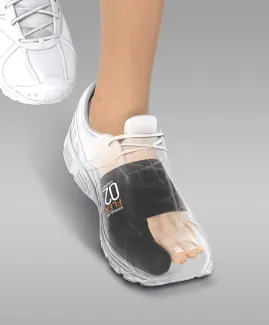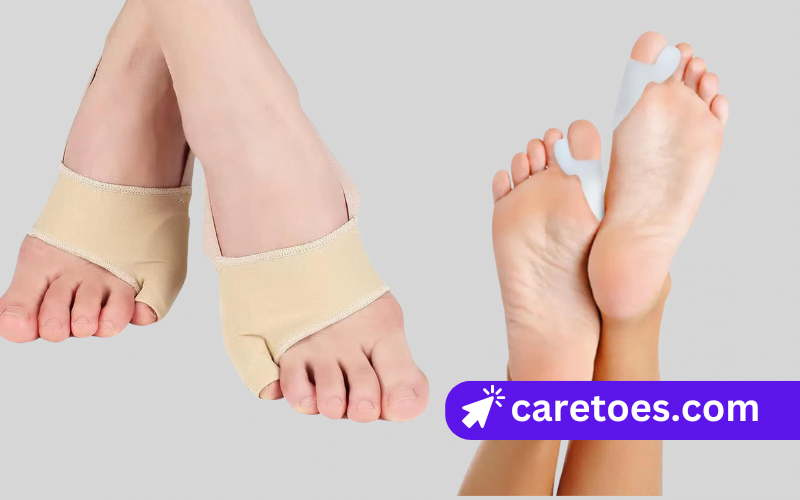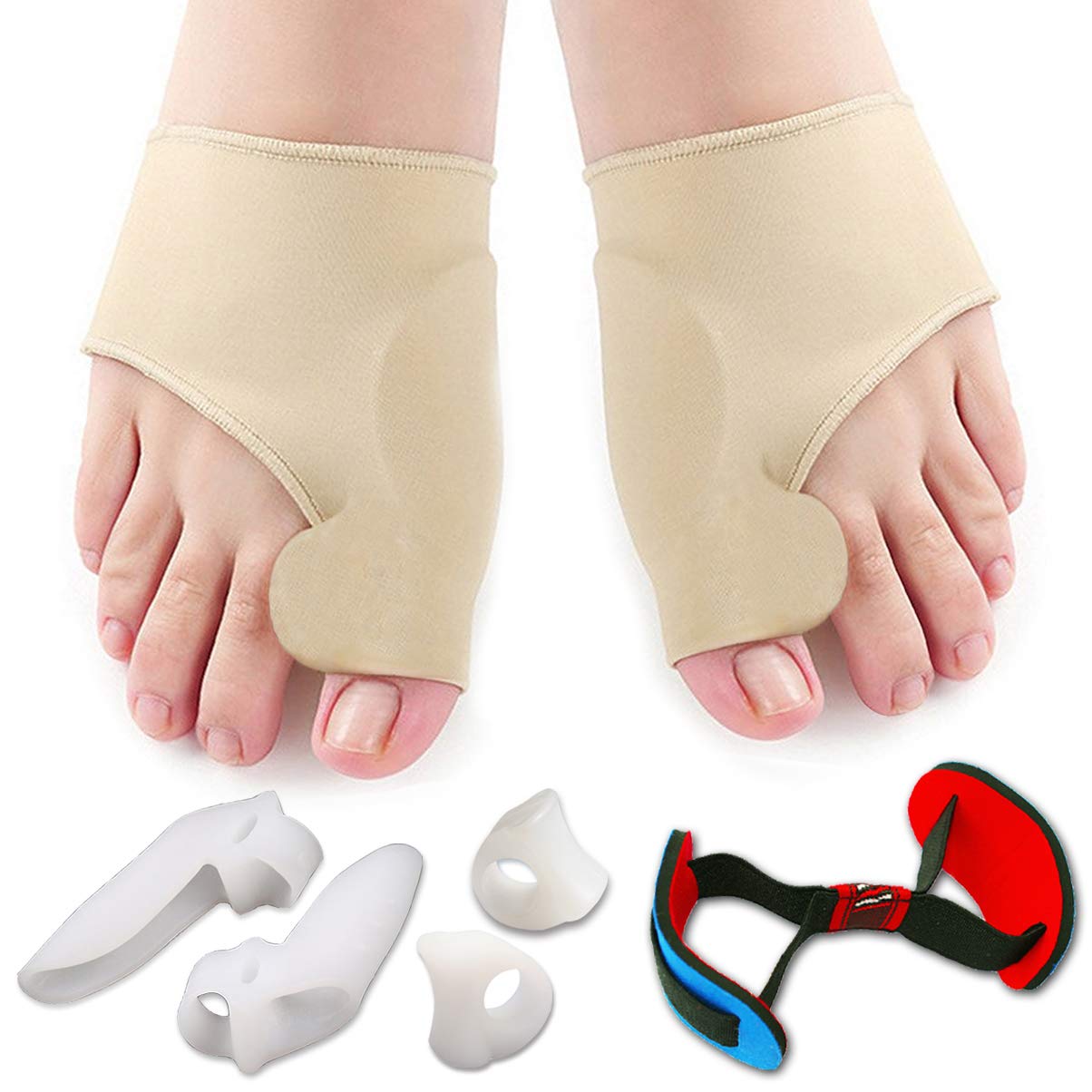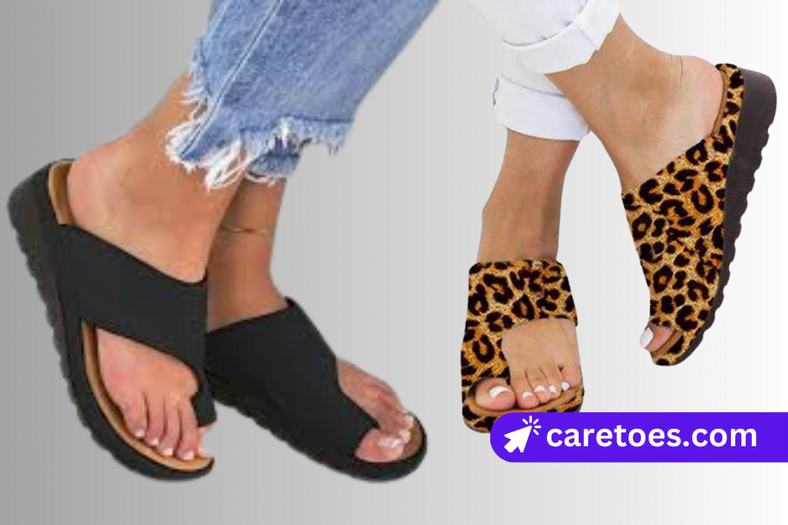Yes, you can wear a bunion corrector with shoes. Choose shoes with a roomy toe box for comfort.
Bunions can cause significant discomfort, especially when wearing tight shoes. Many people seek relief through bunion correctors. These devices help realign the toe joint and reduce pain. Wearing a bunion corrector with shoes is possible, but you need to select the right footwear.
Opt for shoes that offer ample space in the toe area. This ensures the corrector fits comfortably without added pressure. Properly fitting shoes can enhance the effectiveness of the bunion corrector. Look for options with adjustable straps or laces for a customized fit. Prioritizing comfort and support in your footwear can make a significant difference in managing bunion pain.
Table of Contents

Credit: www.feetfeet.co.uk
Introduction To Bunion Correctors
Bunion correctors are tools used to alleviate pain and discomfort caused by bunions.
They help to realign the big toe and reduce the prominence of the bunion. Many people
wonder if they can wear a bunion corrector with shoes. The answer is yes, but it depends
on the type of corrector and the shoes you choose.
What Are Bunion Correctors?
Bunion correctors are devices worn to correct the alignment of the big toe. They
provide relief from pain and pressure caused by bunions. These correctors work by
gently pushing the big toe back into its natural position.
Common Types Of Bunion Correctors
There are several types of bunion correctors available:
- Toe Spacers: These are small devices placed between the toes. They help to keep the toes separated and aligned.
- Bunion Splints: These are worn around the foot and big toe. They provide support and alignment during the night.
- Gel Bunion Pads: These are soft pads placed over the bunion. They provide cushioning and reduce friction.
| Type | Best For | Can Be Worn With Shoes |
|---|---|---|
| Toe Spacers | Daytime use | Yes |
| Bunion Splints | Nighttime use | No |
| Gel Bunion Pads | Daytime use | Yes |
Choosing the right bunion corrector depends on your needs and lifestyle. Toe spacers and
gel bunion pads can be worn with shoes. Bunion splints are best worn at night.
Benefits Of Wearing Bunion Correctors
Bunion correctors offer many benefits. They help with pain and align your feet. Let’s explore these benefits in detail.
Pain Relief
Many people suffer from bunion pain. A bunion corrector can help reduce this pain. It works by cushioning your bunion.
Pain relief is the most important benefit. With less pain, you can walk more comfortably. This helps you enjoy your daily activities.
Improved Foot Alignment
Bunion correctors also improve foot alignment. Misaligned feet cause many problems. They can lead to more pain and even injury.
Improved foot alignment means better posture. With better posture, your whole body feels better. This can even help with back pain.
| Benefit | Description |
|---|---|
| Pain Relief | Reduces bunion pain by providing cushioning. |
| Improved Foot Alignment | Helps align feet, leading to better posture. |
Wearing a bunion corrector can make your life better. It offers pain relief and improves foot alignment. Consider trying one today.
Challenges Of Wearing Bunion Correctors With Shoes
Wearing bunion correctors with shoes can be challenging. Many people face comfort issues and shoe compatibility problems. It is important to understand these challenges before using bunion correctors with shoes.
Comfort Issues
Bunion correctors can cause discomfort. They may feel tight or restrictive. This is especially true if you have sensitive feet. The material of the corrector can also rub against your skin. This can lead to irritation or blisters. These issues make it hard to wear the corrector for a long time.
Shoe Compatibility
Not all shoes work well with bunion correctors. Shoes with a narrow toe box are especially problematic. They do not provide enough space for both your foot and the corrector. This can make the shoe feel too tight.
| Type of Shoe | Compatibility |
|---|---|
| Sneakers | Generally good |
| Dress Shoes | Often problematic |
| Sandals | Depends on design |
Here are some tips to improve shoe compatibility:
- Choose shoes with a wide toe box.
- Opt for adjustable shoes like those with laces or straps.
- Consider buying shoes a half size bigger.

Credit: www.healthline.com
Choosing The Right Shoes
Wearing a bunion corrector with shoes can be tricky. The right shoes make a big difference. The correct shoes can help reduce pain and improve bunion correction. Here’s how to pick the best shoes for your bunion corrector.
Shoe Features To Look For
Look for shoes with wide toe boxes. These give your toes space to move. Wide toe boxes prevent squeezing and rubbing against the bunion corrector. Choose shoes with a soft, flexible upper. This helps reduce pressure on the bunion and the corrector.
Good arch support is crucial. It keeps your feet stable and balanced. It also helps distribute weight evenly. Cushioning is another key feature. It absorbs shock and reduces foot strain.
Opt for adjustable closures like Velcro or laces. They allow you to tighten or loosen the shoes easily. This ensures a snug fit without causing discomfort. Lightweight shoes are better. They put less stress on your feet.
Recommended Shoe Brands
Several brands offer shoes that work well with bunion correctors. Here are some top choices:
- New Balance: Known for their wide toe boxes and great arch support.
- Brooks: Offers excellent cushioning and flexible uppers.
- Altra: Features wide toe boxes and zero-drop soles for balance.
- Orthofeet: Designed specifically for foot problems, including bunions.
- Hoka One One: Provides superior cushioning and support.
These brands provide shoes that accommodate bunion correctors. They help keep your feet comfortable and pain-free.
Tips For Wearing Bunion Correctors With Shoes
Wearing a bunion corrector with shoes can be tricky. But with the right tips, it’s possible. Here are some helpful ways to wear a bunion corrector comfortably with your shoes.
Gradual Adjustment
Begin by wearing the bunion corrector for short periods. Start with 30 minutes each day. Gradually increase the time you wear it.
This helps your feet get used to the corrector. Your skin and muscles will adapt better with time.
Ensure you monitor any signs of discomfort. Take breaks if needed to avoid irritation.
Proper Fit And Sizing
The right size ensures comfort and effectiveness. Measure your foot accurately before purchasing a bunion corrector.
Use the size chart provided by the manufacturer. This guarantees the corrector fits well.
| Foot Measurement | Corrector Size |
|---|---|
| 6-7 inches | Small |
| 7-8 inches | Medium |
| 8-9 inches | Large |
Also, ensure your shoes are wide enough. Narrow shoes can worsen bunion pain. Look for shoes with a wide toe box.
Here are some tips for selecting the right shoes:
- Choose shoes with soft, flexible material.
- Avoid high heels and pointed toes.
- Opt for adjustable straps or laces.
These tips will help you wear a bunion corrector comfortably with shoes. Follow them for better foot health and comfort.

Credit: epitact.co.uk
Expert Opinions On Bunion Correctors
Bunions are a common foot problem. They cause pain and discomfort. Many people ask, “Can you wear a bunion corrector with shoes?” Here are some expert opinions. This section covers Podiatrist Recommendations and Real-World Experiences.
Podiatrist Recommendations
Podiatrists are foot doctors. They know a lot about bunions. Many podiatrists recommend bunion correctors. They say these devices can help. They can reduce pain and correct the bunion.
Some podiatrists suggest wearing them with shoes. They advise choosing the right shoes. The shoes should be roomy. This gives the bunion corrector space. It also prevents extra pressure on the bunion.
| Podiatrist Tips | Details |
|---|---|
| Choose Roomy Shoes | Ensure enough space for the bunion corrector. |
| Check Shoe Material | Soft, flexible material is best. |
| Try Different Sizes | Find the best fit for comfort and support. |
Real-world Experiences
Many people use bunion correctors. They share their experiences online. These real-world stories are helpful. They offer practical tips and insights.
Some users say they wear bunion correctors with shoes daily. They find it comfortable. They suggest starting with short periods. This helps the foot adjust. Gradually, you can increase the time.
- Start with short periods.
- Gradually increase the time.
- Monitor for any discomfort.
Other users mention the type of shoes. They prefer shoes with wide toe boxes. They also like soft, flexible materials. This combination works best with bunion correctors.
- Choose wide toe boxes.
- Look for soft materials.
- Avoid tight shoes.
Real-world experiences can guide you. They help you choose the best shoes. This makes wearing bunion correctors easier and more effective.
Alternatives To Bunion Correctors
If you struggle with bunions, bunion correctors aren’t the only option. There are various alternatives to consider. Each method has its own benefits and can be more suitable for different needs. Below are some effective alternatives:
Surgical Options
For severe bunions, surgery might be necessary. There are several types of surgeries available:
- Bunionectomy: Removal of the bunion.
- Osteotomy: Cutting and realigning the bone.
- Arthrodesis: Fusing the affected joint.
Consult a doctor to determine the best surgical option for you. Each type has its own recovery time and success rate.
Non-surgical Treatments
Non-surgical treatments can help manage bunions effectively. These methods are less invasive and often more comfortable.
- Orthotics: Custom shoe inserts that relieve pressure.
- Padding: Cushions that protect the bunion from friction.
- Physical Therapy: Exercises to strengthen foot muscles.
- Medication: Pain relievers to reduce discomfort.
These treatments can be combined for better results. Always consult a healthcare provider before starting any new treatment.
Frequently Asked Questions
How Many Hours Should You Wear A Bunion Corrector?
Wear a bunion corrector for 6-8 hours daily. Begin with shorter periods and gradually increase time for comfort.
Do Bunion Correctors Actually Work?
Bunion correctors can provide temporary relief and help align toes. They don’t cure bunions permanently. Consistent use and proper footwear enhance effectiveness. Consult a podiatrist for best results.
Do Podiatrists Recommend Bunion Correctors?
Yes, podiatrists often recommend bunion correctors. They help alleviate pain and can slow bunion progression. Always consult your podiatrist first.
How To Protect A Bunion When Wearing Shoes?
Use padded bunion guards or cushions. Wear wide, comfortable shoes with soft insoles. Avoid high heels and tight shoes. Opt for shoes with adjustable straps. Apply anti-inflammatory creams for relief.
Conclusion
Wearing a bunion corrector with shoes is possible and beneficial. Choose the right footwear for comfort and effectiveness. Properly fitted shoes can enhance your bunion treatment. Always prioritize comfort and support. Don’t let bunions hold you back; take steps toward relief and better foot health today.




